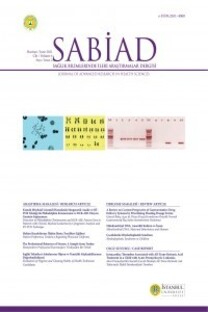NEXT-GENERATION SEQUENCING IN CANCER: GENETIC DIAGNOSIS, RISK PREDICTION AND CLASSIFICATION
In recent years, developments in the field of next-generation sequencing have led to a decrease in prices, making NGS an essential tool in routine diagnosis. Targeted approaches such as gene panels and exome sequencing have provided many advantages in discovering somatic variants with the help of powerful computational algorithms. However, such targeted approaches fall short regarding the discovery of structural variants and regions of non-coding DNA such as introns, non-Coding RNAs, or regulatory elements. Today, the use of whole-genome sequencing is increasing; open-source databases are developing. However, the difficulty of functional studies related to non-coding regions slows down the development of knowledge on this subject and creates a bottleneck in cancer diagnosis and treatment processes. The combination of new generation technologies such as CRISPR-Cas9, Single-cell sequencing, and long-read sequencing provides excellent advantages in discovering and interpreting variants in non-coding regions but creates new generation problems. The ever-increasing need for computational power and the need for trained and highly qualified personnel make the institutionalization of NGS infrastructures rather difficult, which affects the diagnostic processes of patients at the end of the day. Within the scope of this talk, current developments and new generation approaches to these issues will be focused.
NEXT-GENERATION SEQUENCING IN CANCER: GENETIC DIAGNOSIS, RISK PREDICTION AND CLASSIFICATION
In recent years, developments in the field of next-generation sequencing have led to a decrease in prices, making NGS an essential tool in routine diagnosis. Targeted approaches such as gene panels and exome sequencing have provided many advantages in discovering somatic variants with the help of powerful computational algorithms. However, such targeted approaches fall short regarding the discovery of structural variants and regions of non-coding DNA such as introns, non-Coding RNAs, or regulatory elements. Today, the use of whole-genome sequencing is increasing; open-source databases are developing. However, the difficulty of functional studies related to non-coding regions slows down the development of knowledge on this subject and creates a bottleneck in cancer diagnosis and treatment processes. The combination of new generation technologies such as CRISPR-Cas9, Single-cell sequencing, and long-read sequencing provides excellent advantages in discovering and interpreting variants in non-coding regions but creates new generation problems. The ever-increasing need for computational power and the need for trained and highly qualified personnel make the institutionalization of NGS infrastructures rather difficult, which affects the diagnostic processes of patients at the end of the day. Within the scope of this talk, current developments and new generation approaches to these issues will be focused.
___
- Grozescu T, Popa F. Prostate cancer between prognosis and adequate/proper therapy. J Med Life. 2017;10(1):5-12
